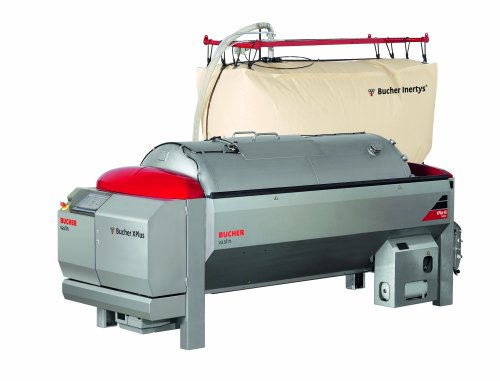Pneumatic membrane press
Pressure is exerted on the grapes by an air-filled membrane. Pressing whole grapes from mechanical or manual harvesting, or fermented pomace, is gentler and more respectful than with older models of continuous screw or horizontal plate presses.
Wines from pneumatic presses are of better quality, provided there is no crushing upstream. There are closed-cage and open-cage models.
Wines from pneumatic presses are of better quality, provided there is no crushing upstream. There are closed-cage and open-cage models.

Introduction to pneumatic wine presses
Pneumatic presses are modern, sophisticated winemaking equipment, widely used in vineyards around the world.
Designed for gentle, controlled pressing, they extract the juice from the grapes with great precision, minimising the extraction of bitter tannins and maximising the quality of the must.
They are particularly appreciated for their ability to handle both red and white grape varieties, as well as for their adaptability to different types of harvest, whether manual or mechanical, and even pomace during devatting.

Pneumatic membrane press
How they work
Pneumatic presses operate using an inflatable membrane, often made of elastomer material, located inside a cylindrical tank. There are several key stages in the process:- Loading the grapes: The grapes are introduced into the perforated tank, which allows the juice to drain away while retaining the solids.
- Inflating the membrane: Once the tank has been loaded, the membrane is gradually inflated using compressed air or water, exerting uniform pressure on the grapes.
- Juice extraction: The juice is extracted by gentle pressure, passing through the perforations in the tank to be collected.
- Deflating and releasing: The membrane is deflated after each pressing cycle, allowing the grapes to reposition themselves for uniform and efficient pressing.
- Repeated cycles: This process is repeated several times according to a predefined programme, optimising juice extraction.
Settings
Pneumatic presses offer great flexibility thanks to their various settings, allowing precise adaptation to the needs of the winemaking process:- Inflation pressure: Adjustable according to the sensitivity of the grapes and the desired level of pressing. Pressure parameters can be adjusted to avoid excessive extraction of tannins.
- Cycle duration: Pressing and release cycles can be programmed for optimum duration, facilitating gradual, even extraction.
- Vat rotation speed: In some models, the vat can be rotated to improve the homogeneity of pressing.
- Programmable sequences : Automatic programmes can be defined to adapt pressing to different grape types or wine styles.
Advantages and disadvantages
Advantages
- Gentle pressing : The pressure applied by the membrane is uniform and controlled, minimising the risk of extracting undesirable compounds such as tannins.
- Versatility: Suitable for a wide range of grapes and harvests, pneumatic presses are equally suited to white, rosé and red wines.
- Efficiency : Maximum juice extraction with a low loss rate.
- Ease of use : Programming and automation of cycles simplify the process for the operator.
- Hygiene : Designed for easy cleaning, reducing the risk of contamination.
Disadvantages
- High cost : Initial investment is often higher than for other types of press, which can be a barrier for small producers.
- Maintenance: Components such as the membrane require regular servicing to ensure optimum performance.
- Complexity: Automated systems and fine adjustments may require specific training to operate effectively.
Pneumatic presses are a first-rate choice for producers wishing to combine quality and precision in the winemaking process.
Their flexibility and advantages make them indispensable equipment for modern wineries.
